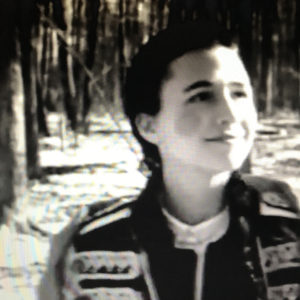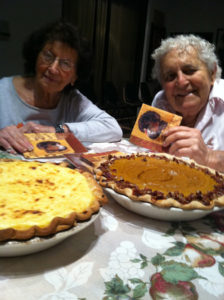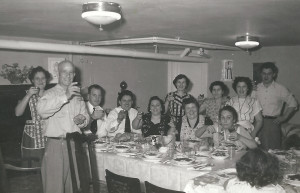We put a lot of pressure on ourselves to make things just right and perhaps there’s even more of that pressure in these days of Instagram and Facebook, where everything looks so wonderful. Not many people are posting pictures of the messes in their lives, after all. It’s pretty easy to feel a bit inadequate and a bit left behind, too.
I’ve felt this a lot lately. In just the past few days, since Thanksgiving, Instagram and indeed the world all around me has exploded into Christmas lights and trees. And though I love Christmas, I don’t feel at all ready for it. And I’ve even felt a bit this weekend like it’s passing me by. Already.
All right then. Let’s sit back a moment, and take time to pause. One obvious thing that hits me, when I really think about it, is it’s not even December yet. This already makes me feel more at ease. Advent, the time of preparation before Christmas, won’t even begin until next Sunday, the Third of December.
Here at our little old house in Lake Worth, there is still Indian corn hanging on the door and pumpkins on the porch. Next Friday, when December begins, we will open the first window of our Advent calendar, and we will begin burning our daily Advent candle. Over the weekend, Seth will make an Advent wreath and on Sunday, we will light the first candle: purple. The Sunday after, two purple candles. The Sunday after that, two purples and a rose candle. The Sunday after that, which will also be Christmas Eve, all four candles will be lit: three purples and one rose. All this time, we will slowly be shifting toward Christmas: cleaning home and hearth, baking, lighting candles in the windows. By mid December we’ll get our tree and begin illuminating our home, just as the darkest night approaches. It is a slow and gradual process here, marked with doing things with care. It is a process that brings us peace in an otherwise hectic time. We call it the Slow Christmas Movement.
If things feel far too fast for you, too, we invite you to join us. It also means celebrating Christmas for its full Twelve Days beginning only after Christmas Day itself has passed. This is not for everyone, for it will put you in a place decidedly outside the dominant commercial Christmas culture. But it will bring you, I think, as it brings us, a Christmas season (and an Advent season, too) that feels calmer, less rushed, more peaceful, and if Christmas is about peace on earth, goodwill toward all… then maybe this––tapping into the ancient traditions of the holiday––is where it begins.
I don’t often encourage you to buy things, but the Convivio Book of Days Catalog places a big focus on Advent. We sell the traditional glittery German Advent calendars I remember from my childhood, and we sell daily Advent candles that are made by hand in England. We’re also running a special this year on the traditional purple and rose candles for Advent, and the metal ring to burn them in. The link above will take you to our homepage, where you can shop Advent and Christmas and all of our lines. Oh hey! Spend $50 or more and we’ll pay the shipping on domestic orders (there’s a flat shipping fee of $8.50 if you spend less than $50). We ship US Priority Mail, so you should have your order in plenty of time for the start of Advent if you order in the next couple of days. If you’re ordering for a destination outside the US, you’ll be charged a $30 shipping charge, but we’ll calculate your actual shipping charge and we won’t charge your card until we contact you with that information to let you know what it will be (N.B.: usually it’s considerably less).
I’ll leave you with one last thing today, a musical gift. I talk a lot about Jane Siberry and her indirect influence on my writing, my creative endeavors, even my approach to work and my daily life. My introduction to her was on MTV’s “120 Minutes,” late on a Sunday night in 1987, with the video for a song called “Ingrid and the Footman.” I bought the record. The song that really sealed the deal for me, though, in terms of Ms. Siberry’s genius, was at the end of the record: a song that ran over 11 minutes long called “The Bird in the Gravel.” I think of this song every late autumn, just about this time. Jane made a short film for the song back then, one of her first adventures into the medium. A song that’s 11 minutes long forces you to take it slow. Between that, and the barren trees, and the quality of the sunlight… well, I don’t know if Jane Siberry made this film in late November, but it feels like it to me. If you have 11 minutes to spare, and I hope you do, “The Bird in the Gravel” is my gift, through Jane, to you today.
Wishing you peace.
John
Today’s image is a still from “The Bird in the Gravel” by Jane Siberry, 1987.


